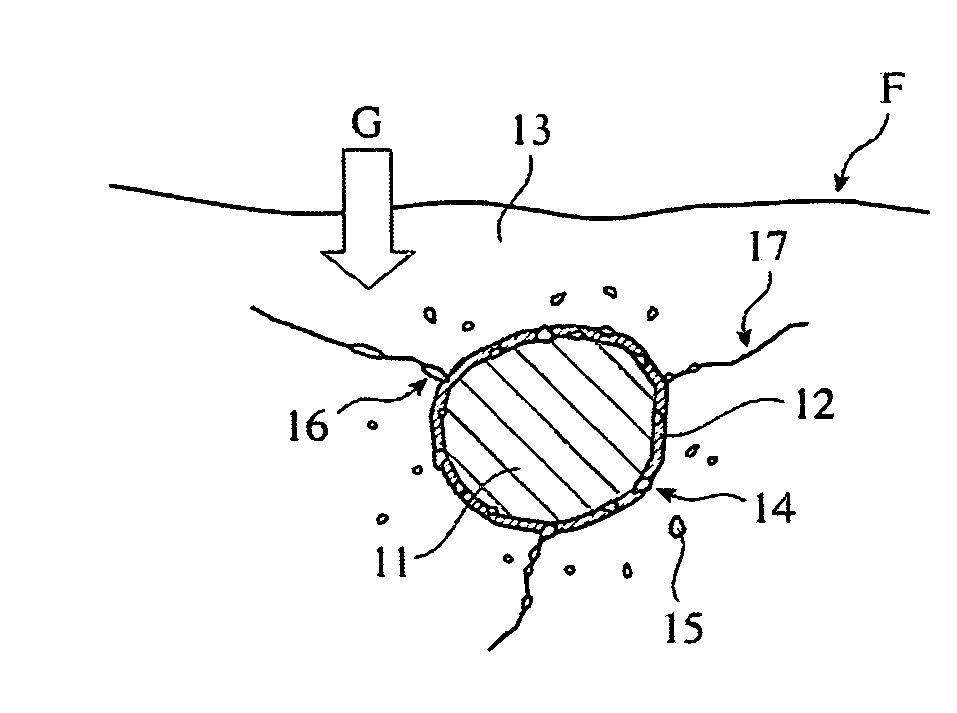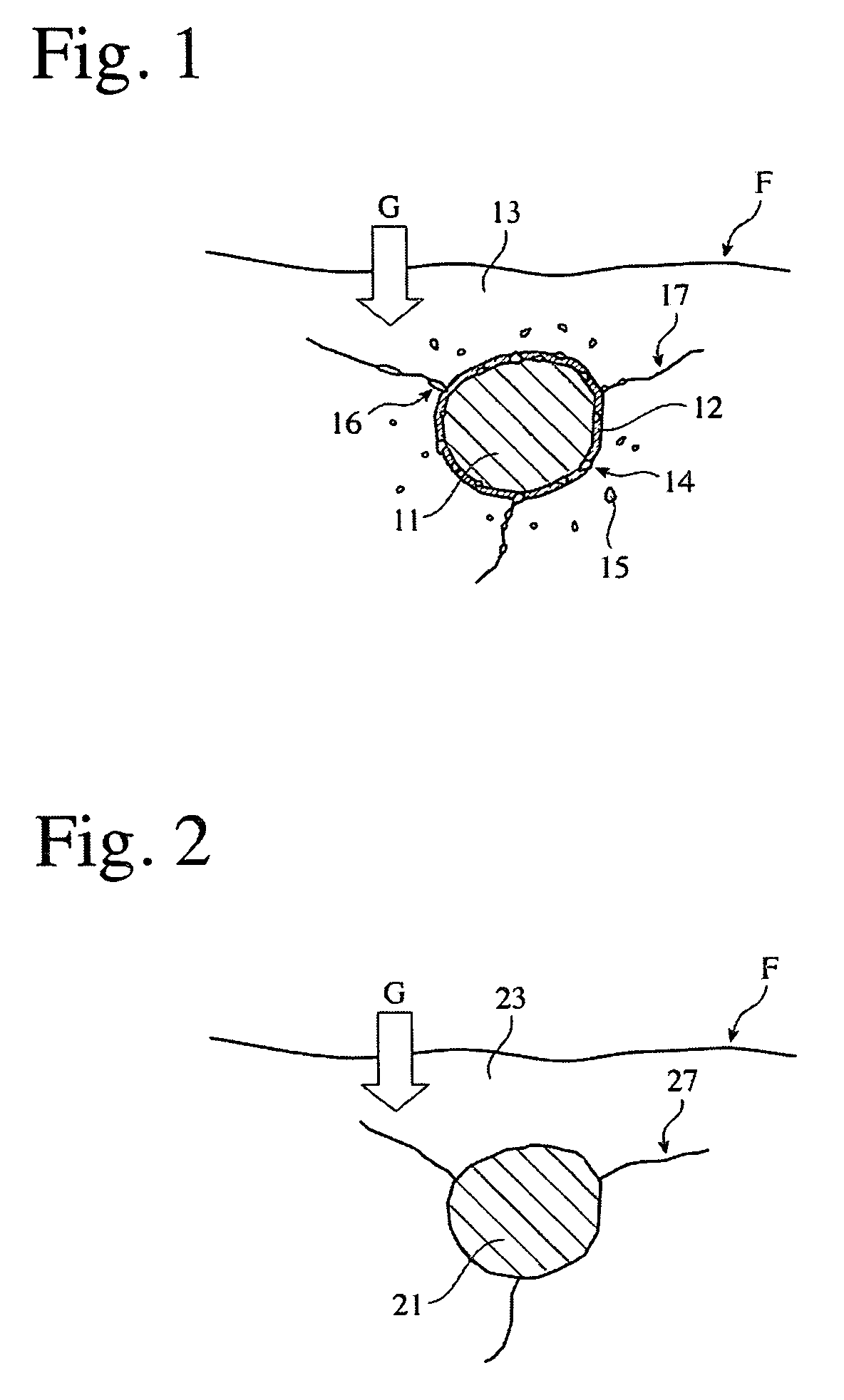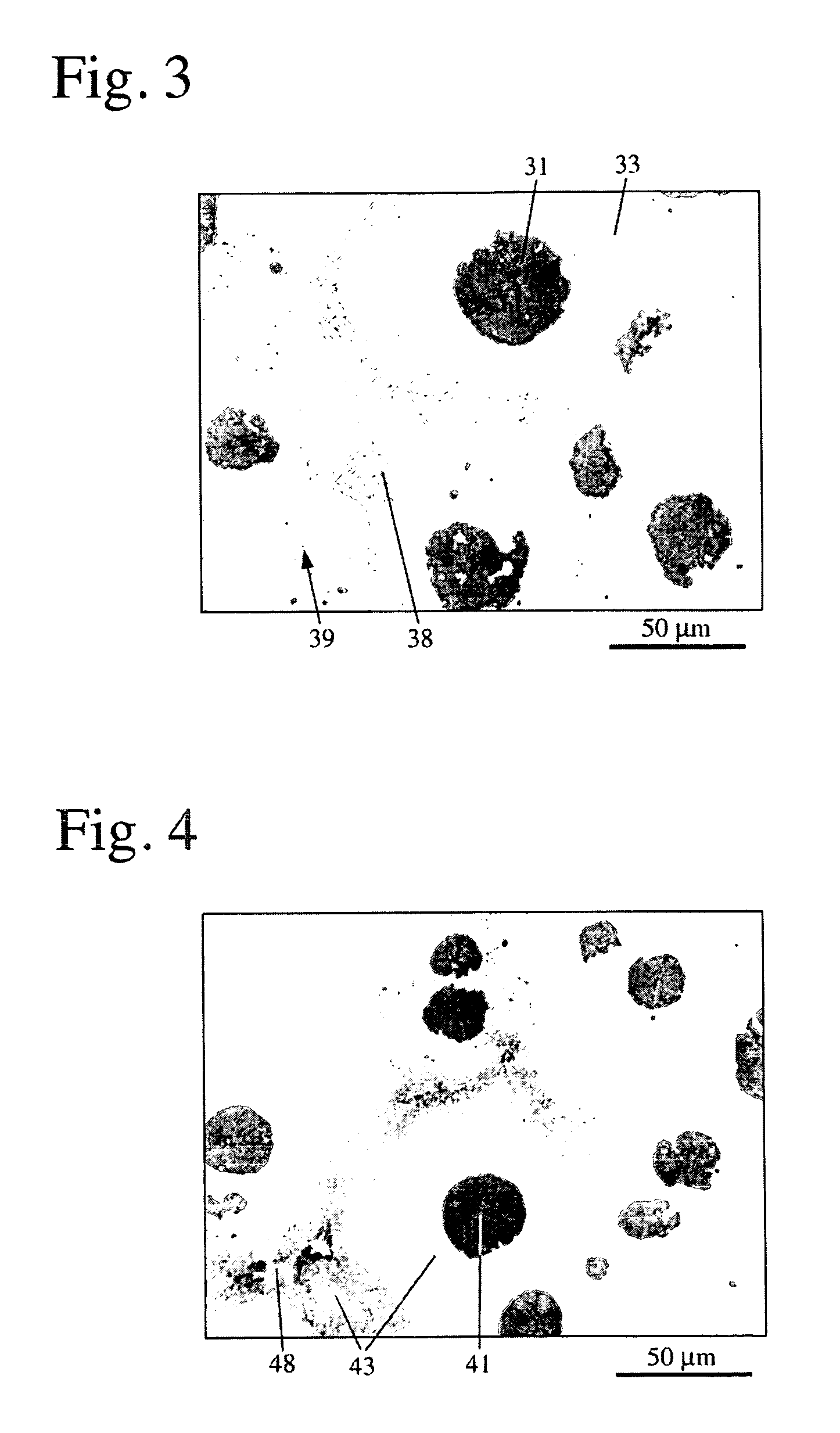Heat-resistant cast iron and exhaust equipment member formed thereby
a technology of exhaust equipment and cast iron, which is applied in the direction of engine components, mechanical equipment, machines/engines, etc., can solve the problems that oxidation cannot be suppressed fully, and achieve excellent oxidation resistance and thermal crack resistance, and low cost
- Summary
- Abstract
- Description
- Claims
- Application Information
AI Technical Summary
Benefits of technology
Problems solved by technology
Method used
Image
Examples
examples 1-74
, COMPARATIVE EXAMPLES 1-16, AND CONVENTIONAL EXAMPLES 1-6
[0134]Each cast iron having a chemical composition (% by weight) shown in Table 1 was melted in an SiO2-lined, 100-kg, high-frequency furnace in the air, tapped from the furnace at 1450° C. or higher, and spheroidized by a sandwiching method using commercially available Fe—Si—Mg. Immediately thereafter, it was poured at 1300° C. or higher into a Y-block mold. After shake-out, each sample was shot-blasted, and annealed for ferritization by keeping it at a temperature of 600-940° C. as shown in Table 2 for 3 hours, and then cooling it in the furnace. Incidentally, no heat treatment was conducted on the samples of Example 9, Comparative Examples 1 and 9, and Conventional Examples 1, 2 and 4, and annealing for ferritization was conducted not by furnace-cooling but by air-cooling in the sample of Comparative Example 2. The samples of Conventional Examples 5 and 6 were spheroidized by a sandwiching method using commercially availab...
example 75
[0209]The exhaust manifold 151 schematically shown in FIG. 17 was formed from the heat-resistant cast iron of Example 9, and machined in an as-cast state. The resultant exhaust manifold 151 was free from casting defects such as shrinkage cavities, misrun, gas defects, etc., and did not suffer insufficient cutting, etc. at all when machined. In FIG. 17, 151a denotes flanges, 151b denotes branched tubes, and 151c denotes a convergence portion.
[0210]The exhaust manifold 151 of Example 75 was assembled to an exhaust simulator of a high-performance, 2000-cc, series-four-cylinder gasoline engine, to conduct a durability test to examine a life until cracking occurred and how the cracking occurred. The test condition was the repetition of a heating / cooling cycle comprising 10-minute heating and 10-minute cooling, to count the number of cycles until cracks penetrating the exhaust manifold 151 are generated. The exhaust gas temperature at a full load in the durability test was 920° C. at the ...
example 76
[0212]An exhaust manifold 151 was formed by the heat-resistant cast iron of Example 8 in the same manner as in Example 75 except for conducting annealing for ferritization by keeping it at 900° C. for 3 hours and then cooling it in a furnace. The resultant exhaust manifold 151 was free from casting defects, troubles such as heat-treatment deformation, and troubles during machining, etc. The exhaust manifold 151 of Example 76 was assembled to the exhaust simulator to conduct a durability test under the same condition as in Example 75. The surface temperature of the exhaust manifold 151 was the same as in Example 75. The durability test revealed that extremely small cracks were generated in the exhaust manifold 151 of Example 76 by 952 cycles substantially to the same degree and in the same portions as in Example 75. However, no cracks were generated in the convergence portion, through which a high-temperature exhaust gas passed, with substantially no oxidation occurring in the entire...
PUM
| Property | Measurement | Unit |
|---|---|---|
| weight ratio | aaaaa | aaaaa |
| weight ratio | aaaaa | aaaaa |
| temperature | aaaaa | aaaaa |
Abstract
Description
Claims
Application Information
 Login to View More
Login to View More - R&D
- Intellectual Property
- Life Sciences
- Materials
- Tech Scout
- Unparalleled Data Quality
- Higher Quality Content
- 60% Fewer Hallucinations
Browse by: Latest US Patents, China's latest patents, Technical Efficacy Thesaurus, Application Domain, Technology Topic, Popular Technical Reports.
© 2025 PatSnap. All rights reserved.Legal|Privacy policy|Modern Slavery Act Transparency Statement|Sitemap|About US| Contact US: help@patsnap.com



